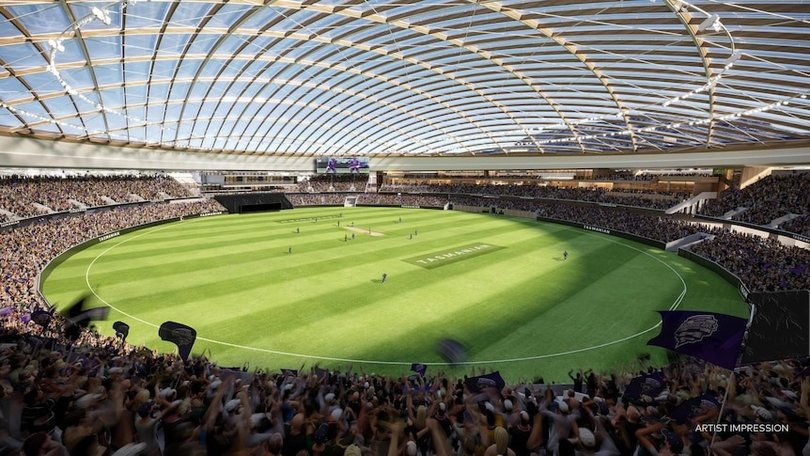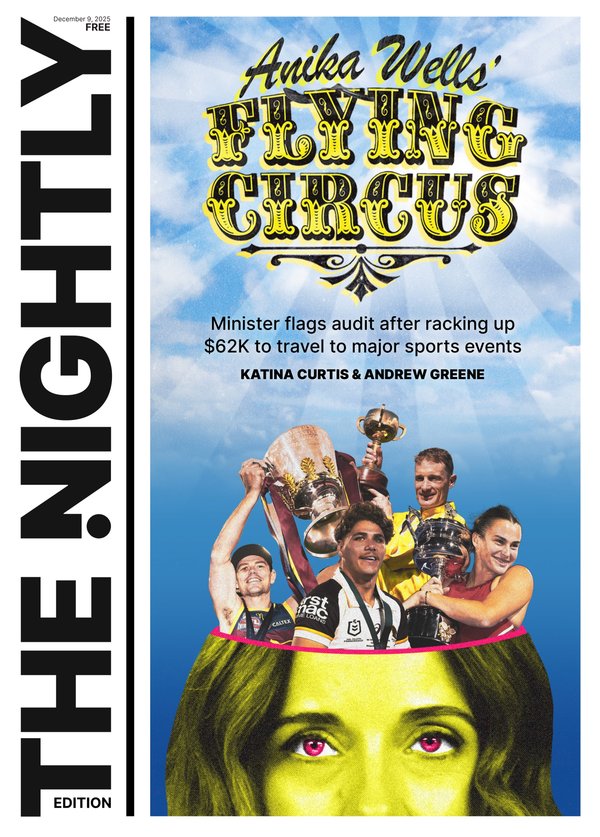BEN MCCLELLAN: Building the Macquarie Point Stadium, Hobart, will pay off for the Devils and Tasmania
If you build it, they will come.
A simple adage often repeated to justify action over inaction.
It was never clear if it was God whispering the instructions to Kevin Costner in Field of Dreams, but the Tasmanian Devils will be praying for some divine intervention of their own to ensure the Hobart stadium gets built.
Sign up to The Nightly's newsletters.
Get the first look at the digital newspaper, curated daily stories and breaking headlines delivered to your inbox.
By continuing you agree to our Terms and Privacy Policy.Tasmania has found itself in the national spotlight following the fall of the Rockliff Government, with the Apple Isle expected to be told today it’s going to an election after last week’s vote of no confidence in Jeremy Rockliff.
There are a lot of issues at play — from ferries few of us will ever ride on being stuck in port in Finland, to proposals to privatise the rail network and TasRacing to help fix the ballooning budget deficit (tipped to exceed $1 billion), and of course, the Macquarie Point Stadium.
The Liberal Government has since backtracked on its privatisation policy, but the increasing cost of the new stadium — now estimated at $945 million but likely to tip past $1 billion — is facing staunch opposition from several Greens and independent MPs.
I won’t pretend to understand the machinations of Tasmanian politics, but both major parties back the stadium, which is non-negotiable for the entry of the Tasmanian Devils into the AFL by 2028.
The problem is getting the support of these few independent and Greens, but now very powerful, MPs to see the long-term benefit of the stadium.
One of the State’s greatest sporting products, Richmond legend and columnist for The Nightly Matthew Richardson, has argued passionately for the stadium and its wider benefits, while former Australian cricket captain Tim Paine said Tasmanians were being embarrassed by the possibility of the stadium not being built.
There is a fair argument that Tasmania already has two ovals fit for AFL purposes — Launceston Oval and Bellerive Oval. Launceston, which is set to undergo a $130m upgrade, has hosted AFL games since 2001, but only has a capacity of 15,600.
Spending $1b on a fancy new stadium with a roof just because the AFL says so may seem harsh, but if Tasmania wants to mix it with the larger States, it will have to build a major new sports stadium at some point.
Every other major capital has built a new stadium or undergone major refurbishments of its existing stadiums in the past 15 years — and they all are reaping the benefits.

The $535m spent on the Adelaide Oval redevelopment has made it a premier sporting destination and helped earn it the right to host the AFL’s Gather Round, which is the envy of State Governments across the country.
The NSW Government bit the bullet on the rundown Sydney Football Stadium, spending $828m to make the venue — now known as Allianz Stadium — a terrific sporting hub in the heart of Sydney.
The NRL has a storied history at the ground, and now South Sydney, which moved its home games to Accor Stadium in western Sydney, is trying to return to Allianz, also the home ground of the Sydney Roosters.
The NSW Government was due to spend $810m refurbishing Accor Stadium, originally built for the 2000 Sydney Olympics, but scaled back the plans when COVID hit.
It did spend $65m upgrading Sydney Showground Stadium (now Engie Stadium) to make it a 25,000-seat venue for the GWS Giants.
Macquarie Point will have a similar capacity, but will be a state-of-the-art facility capable of hosting conferences and major entertainment acts.
And, unlike the GWS stadium, will be in the heart of an AFL-mad market so there won’t be an issue getting bums on seats.
Even the MCG has undergone significant refurbishments over the years, with the Victorian Government in the process of assessing the business case study of spending $1b on a redevelopment centred on the Shane Warne Stand which could take the ground’s capacity to 105,000.
There were plenty of naysayers about the WA Government building Optus Stadium in 2017, but like the other upgraded or new stadiums in their principalities, it has become the crown jewel of the west’s sporting landscape.
The new Victoria Park Stadium for the 2032 Brisbane Olympics will replace the Gabba and will be a fantastic venue for AFL, NRL, soccer and other sports.
All major spending initiatives by all levels of government face opposition — and rightly so.
Spending vast sums of money so we can watch a ball get kicked around for two hours may seem ludicrous to non-sports lovers, but it is an investment in the future.
Any number of economists can produce forecasts showing the vast or minimal benefit to Tasmania, but when people go out they spend money and a new stadium will get people out, lots of them.
If Tasmania does not build the stadium, it not only misses out on the Devils, but also on sporting and entertainment opportunities that are yet to materialise.
The cost of building new stadiums is only going to rise, and while it’s never ideal to do so when your books are deep in the red, doing it now will provide short-term economic stimulus in terms of jobs and activity — and long-term benefits and flow-on effects for hospitality and other business opportunities in the stadium precinct.
The return on investment may take 10, 15 or even 20 years, but investing in Australians’ love of sport is a sure bet that will pay off.
There are sure to be numerous public services crying out for more money in Tasmania, but investing in the future of the State’s sporting infrastructure could help unite the fractured Apple Isle once that first ball is bounced.
